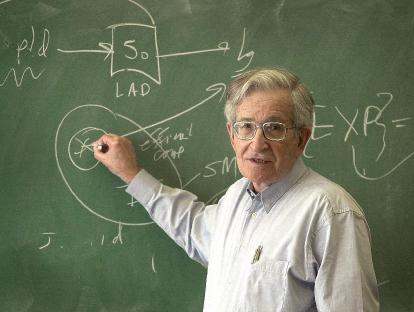Image taken from: http://optimizingimmersion.com/wp-content/uploads/2014/02/67aea35b7ff8a9f58c143c6a331cf2ca.jpg
Second language learning
Krashen believes that there is no fundamental difference between the way we acquire our first language and our subsequent languages. He claims that humans have an innate ability that guides the language learning process. Infants learn their mother tongue simply by listening attentively to spoken language that is (made) meaningful to them. Foreign languages are acquired in the same way.
Krashen synthesizes his theories of second/foreign language learning in what is usually referred to as the Monitor Model.
The Monitor Model has 5 components:

Imagen taken from: http://image.slidesharecdn.com/themonitormodel-111029154558-phpapp01/95/the-monitor-model-2-728.jpg?cb=1319903192
The Acquisition-Learning Hypothesis
There are two ways of developing language ability: by acquisition and by learning. Acquisition is a sub-conscious process, as in the case of a child learning its own language or an adult 'picking up' a second language simply by living and working in a foreign country. Learning is the conscious process of developing a foreign language through language lessons and a focus on the grammatical features of that language.
The Natural Order Hypothesis
Language is acquired in a predictable order by all learners. This order does not depend on the apparent simplicity or complexity of the grammatical features involved. The natural order of acquisition cannot be influenced by direct teaching of features that the learner is not yet ready to acquire.
The Monitor Hypothesis
We are able to use what we have learned (in Krashen's sense) about the rules of a language in monitoring (or self-correcting) our language output. Clearly, this is possible in the correction of written work. It is much more difficult when engaging in regular talk.
The Input Hypothesis
We acquire language in one way only: when we are exposed to input (written or spoken language) that is comprehensible to us. Comprehensible input is the necessary but also sufficient condition for language acquisition to take place. It requires no effort on the part of the learner.
The Affective Filter Hypothesis
Comprehensible input will not result in language acquisition if that input is filtered out before it can reach the brain's language processing faculties. The filtering may occur because of anxiety, poor self-esteem or low motivation.
Visit this blog, which talks more about Krashen's hypothesis
Take a look at these slides for extra information
Stephen Krashen's Input Model (or Monitor Model )
The following information was taken from: http://esl.fis.edu/teachers/support/krashen.htm














